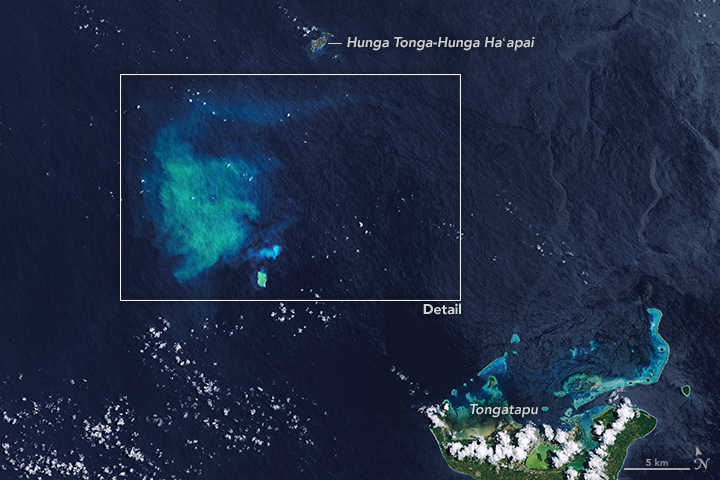Underwater Volcanic Eruption Could Create Temporary Island (Photo)

A turquoise plume interrupted dark swaths of ocean when an underwater volcano erupted off the coast of Tongatapu, the main island of the Polynesian archipelago Tonga, a new satellite image shows.
Murray Ford, a coastal geologist at the University of Auckland in New Zealand, was reviewing satellite images of a young island in Tonga when he noticed a turquoise spot in the ocean. Murray determined that the plume was an underwater volcano actively erupting, according to NASA officials at the agency's Earth Observatory. The satellite image, captured Jan. 27 by the Landsat 8 satellite, shows the plume coming from a seamount located 20 miles (33 kilometers) from Tongatapu.
The ocean water's discoloration to vibrant turquoise is caused by the underwater volcano's release of gases, rocks and volcanic fluids during its eruption, according to NASA. Based on other images collected in the area, the agency estimates that the eruption began on Jan. 23. [Axial Seamount: Images of an Erupting Undersea Volcano]
"It may continue for some days or weeks, and an island may form temporarily," Martin Jutzeler, a geologist at the University of Tasmania who studies underwater eruptions, said in a statement. "However, new volcanic islands are easily eroded by wave action."
Underwater eruptions are common in the Tonga region, which is part of the Tonga-Kermadec volcanic arc and the so-called Pacific Ring of Fire, an area in the Pacific Ocean where several tectonic plates meet, causing earthquakes and volcanic activity. The latest eruption plume most likely came from a seamount that geologists call "Submarine Volcano III," which has erupted in 1911, 1923, 1970, 1990 and 2007, according to NASA officials.
Though the eruption is underwater, NASA officials warned that the volcanic activity can pose a hazard to ships. Underwater eruptions produce pumice, a light, porous rock that floats to the surface and can clog ship engines.
Original article on Live Science.
Sign up for the Live Science daily newsletter now
Get the world’s most fascinating discoveries delivered straight to your inbox.











